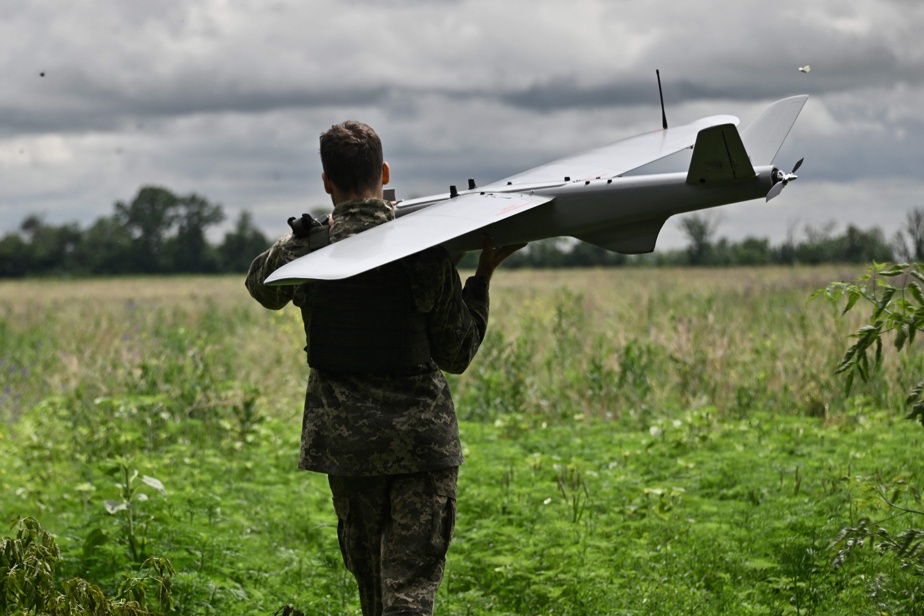(Donetsk region) In eastern Ukraine, soldiers quickly unpack a large gray drone and launch it to check the altitude of the clouds and reconnoiter the area, less than 10 km from the Russian positions.
Reconnaissance or attack, military or civilian, drones, or “unmanned aerial vehicles” (UAV), are now essential, every day and for each side, on the front of the war in Ukraine.
Operators of the 45e brigade use a “made in Ukraine” reconnaissance drone, the Leleka-100, to transmit detailed information to their artillery, which can better reach its targets and thus reduce its shell consumption.
“It makes our work more precise,” explains one of the brigade members, Andriï, 31, whose call sign is “Ulysses”.
“Due to the need to save shells, our artillery works in ‘sniper’ mode”, it must be ultra-precise, he adds.
“We can’t afford to use a lot of shells on a target – 3, 4 or 5, no more – because we don’t have a lot of shells unlike the Russians,” the soldier continues.
In a van hidden under the trees, the operators monitor on laptop screens the images and data transmitted by the drone, which they affectionately call “birdie” (little bird, “ptachki” in Ukrainian).

PHOTO GENYA SAVILOV, AGENCE FRANCE-PRESSE
Far from the image of the basic infantryman who holds his position in a trench, here they have training in IT or marketing and at least some of them speak fluent English.
They boast of the successes achieved by the Ukrainian artillery thanks to drones, such as the destruction in a single day of four Russian Armata combat tanks, a machine of the latest generation.
But the cost of a drone is high. The unit’s large Leleka-100, which looks like a model airplane, costs around 37,500 euros, says Denys, 30, the squad leader.
Coffee lover and nicknamed “Hipster”, Denys previously worked for a Ukrainian company that created a very popular artificial intelligence application.
“Baby” industry
Manufactured by the DeViRo company in a secret location in Ukraine and adopted in 2021 by the Kyiv army, the drone broadcasts video footage of targets and artillery fire.
“It can fly even higher, but we use it at 1000 meters because of the camera and the quality of the images,” explains Andriï.
According to him, the machine is of “average” quality compared to Western models, but it is easy to obtain spare parts from Ukrainian manufacturers.
Unlike small drones used by civilians, the Leleka-100 can stay in the air for two or three hours.
Its lifespan is limited: on average, each drone makes only 20 flights before being shot down by the enemy.
And the soldiers of the unit are well aware of the advantage of the Russians in this “artillery war”.

PHOTO GENYA SAVILOV, AGENCE FRANCE-PRESSE
The Moscow army can afford to fire huge volleys of shells and has also overtaken Ukraine in terms of drone stocks.
It can send in a large number of cheap attack UAVs like the Iranian-made Shahed and expect at least one to hit its target, Andriï says.
Russia also manufactures Lancet tactical attack drones which are “effective enough to destroy Ukrainian artillery units”, he said, while Ukraine does not produce equivalent devices.
“Our industry is trying, but it is only trying, it does not yet have enough experience”, regrets the soldier.
“Right now, many people are trying to work in their garage to make their own drone,” adds Denys.
“Our drone industry is like a baby,” says Andriï, “we need to invest in this sector to make it grow.”
